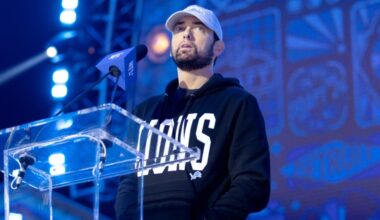Brian May, Queen’s iconic guitarist, is celebrated worldwide for his soaring solos, unique tone, and melodic mastery. From the operatic grandeur of Bohemian Rhapsody to an array of unforgettable riffs, May has influenced countless guitarists, including Steve Vai and Justin Hawkins. So it might surprise fans to learn there’s a notable solo—one of his most ambitious—that he rarely performed live. The reason? Surprisingly pragmatic and tied to artistic choice rather than ability.
The Studio Experiment: Two-Handed Tapping on It’s Late
By 1977, following Queen’s landmark A Night at the Opera, the musical landscape was evolving fast. Punk’s raw energy and heavy metal’s growing dominance pushed guitarists to explore new techniques. Eddie Van Halen popularized two-handed tapping with his lightning-fast fretboard hammer-ons and pull-offs, dazzling audiences and setting a new standard.
But Brian May was experimenting with tapping earlier than many realize. On Queen’s News of the World album, May used tapping in the solo for “It’s Late.” In a 1982 interview with On the Record, May credited discovering the technique from a guitarist who learned it from Billy Gibbons of ZZ Top. Fascinated, May practiced and incorporated it into the studio recording, adding a fresh, edgy texture to Queen’s sound.
Why May Shied Away from Playing It Live
Despite mastering tapping in the studio, May found the technique difficult to execute in live performances. “It was a problem to do onstage,” he admitted. “I found it was a bit too stiff… If I persevered with it, it would probably become second nature, but it wasn’t an alleyway which led very far, to my way of thinking. It’s a bit gimmicky.”
Unlike Eddie Van Halen, whose style revolved around tapping, May saw it as a limited technique that clashed with his melodic sensibility. The physical demands and complexity made it impractical for the dynamic, energetic shows Queen was known for. Rather than force a flashy move that didn’t suit his style, May opted for restraint, focusing instead on musicality.
News of the World: A Bold Shift for Queen
News of the World marked a shift toward a rawer, punchier sound amid punk’s rise. Tracks like “Sheer Heart Attack” and “Get Down Make Love” revealed Queen’s willingness to evolve beyond their earlier symphonic rock roots. May’s tapping solo on “It’s Late” was part of this experimental phase, adding modern flair to their catalogue.
While tapping dates back to 19th-century violinist Niccolò Paganini and saw earlier adoption by Genesis guitarist Steve Hackett, it was Eddie Van Halen who made it mainstream in rock. May’s choice to limit tapping live showcases his prioritization of personal style over trends.
Legacy of Artistic Integrity
Brian May’s avoidance of the tapping solo in live sets wasn’t due to lack of skill, but a deliberate artistic judgment. He recognized tapping as impressive but ultimately not central to his musical identity or Queen’s stage presence.
This decision underscores what has made May legendary: an emphasis on melody, tone, and emotion over flashy gimmicks. The It’s Late tapping solo remains a treasured studio gem—evidence of May’s curiosity and virtuosity—even if it never became a live staple.
In choosing when and how to showcase his talents, Brian May reminds us that true artistry is as much about knowing what not to play as what to play—a balance that helped cement his status as one of rock’s greatest guitarists.





